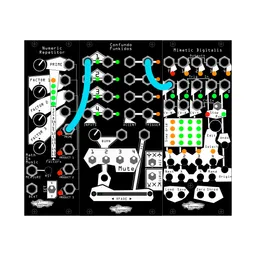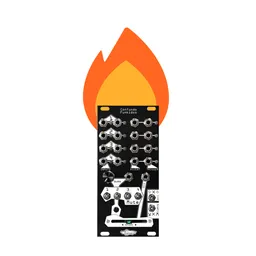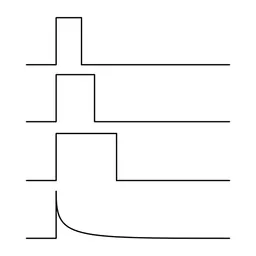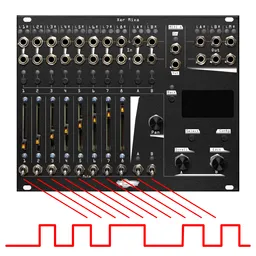Welcome back to Using Stuff Wrong, the series where we use modules in fun and unusual ways. Today, we’ll be exploring a few ways that we can use triggers and CV signals in the audio path of our patches to aid in sound design.
Triggers in audio
Generally, triggers are used as their name implies – to make an event happen at a particular time. But as with all signals in Eurorack, triggers are just voltage, and have a few uses in a mix of audio, too.
Emphasizing drum transients
This is a classic example that dates back to classic drum machines. I’ve mentioned this technique before, but it’s highly effective and is worth trying out for drum patches (and, really, any sound you want to have a strong transient).
Mix the trigger signal that fires off your sound in with the rest of the audio in your drum patch. Adjust the levels of the audio and the trigger to taste, and you’re good to go! Instant punchiness.
If your trigger isn’t short enough (1ms or less), you’ll hear two pops instead of one, but this can be avoided by using a short decay envelope instead of a plain trigger.

This technique has a big impact on the punchiness of kicks and snares, and I use it with pretty much every drum patch I make. Here’s an example of some drum sounds without the triggers, followed by the trigger version.
Pinging filters
Another common place to use triggers in audio is for filter pinging. Running a trigger into a resonant filter can cause it to create a tone all by itself, and is a simple way to create organic melodies, especially if your filter tracks 1v/8va.
Just patch a trigger to the audio input of your filter, and adjust the resonance just below the point of self oscillation. Each time you trigger the filter, it will ring out for a moment..
Similar to the percussion patch above, long triggers can cause two clicks at the beginning of your sound. This can also be avoided by using a short decay instead of a plain trigger.
Filters aren’t the only thing that can be pinged: anything that has a feedback loop can be excited by a trigger. Phasers are a great example of this, and they’ll create an entirely different style of sound with the same patch.
Delays, reverbs, and other effects
This was something I first tried in the development of Imitor Versio, our 12-tap delay module. By simply patching a trigger into an effect like a reverb or a delay (especially a complex delay, like Imitor) you can create wild effects that are perfect for backgrounds and intense atmospheres.
A similar technique is also built into the Desmodus Versio: any time the FSU button is pressed, a short burst of noise is played into the effect, creating a huge wash of reverb that sounds incredible.
DC offsets in audio
This is a much more experimental technique that will create different results depending on what modules you use it with. By adding a small DC offset to an audio signal (with an offset utility like Sinc Pravus or a CV mixer like Roti Pola) you can completely change the timber of a sound by running it into certain distortions, and almost any module that has a transformer. Even modules like the SSF Vortices, which is a characterful mixer, respond in interesting ways to this technique – in fact, they recommend it in the manual.
Your mileage will vary – sometimes you’ll get something cool, sometimes you’ll get something gross, and sometimes you’ll get a result no different from the un-offset signal. Try it out with the processors in your system and see what happens!






